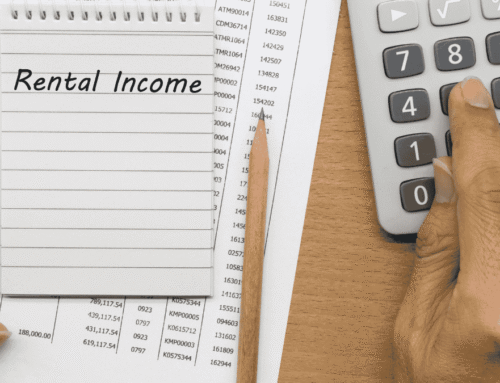Turnkey Rental Property Due Diligence: The 2025 Checklist for Investors
How to Run Due Diligence on a Turnkey Rental Property (From 120+ Deals)
Buying turnkey investment properties can be an efficient way to scale a portfolio… if you verify the provider, the rehab, and the numbers. I’ve acquired 120+ U.S. rentals as a non-U.S. resident, and turnkey real estate has been a big part of that journey. I’ve had plenty of wins, and I’ve made some expensive mistakes, and now my team and I help other investors worldwide buy turnkey properties in the U.S. This guide gives you a practical due diligence checklist you can use and apply to any deal: what information to request, red flags to watch for, how to read a pro forma, and how to model cash flow and DSCR financing so your investment actually performs.
You’ll learn how to:
- Vet turnkey providers (rehab standards, warranties, property management alignment).
- Validate pro formas with realistic rent, taxes/insurance, vacancy, PM, and CapEx.
- Model DSCR with fixed vs ARM and interest-only options using my DSCR calculators.
- Spot common red flags before you wire earnest money.
The 3-Phase Turnkey Rental Property Due Diligence Framework
While turnkey real estate can be very rewarding – especially for investors who want a more hands-off, done-for-you approach, But I speak to others investors every single week who bought turnkey rental properties a few months, or even a couple of years ago, who are now experiencing significant problems with their property, and property management.
The point is, you’re also relying on your turnkey real estate company for everything: sourcing, renovations, tenant placement, and property management. That’s why it’s critical to break your due diligence process into phases so you cover all bases, and void buying yourself a future headache!
Phase 1 screens the provider, Phase 2 validates the property, and Phase 3 pressure-tests your plan & financing so the deal survives real-world assumptions. These are the criteria I use when working with a turnkey provider for me and my clients:
Phase 1 — Your Turnkey Real Estate Provider (people & process)
- Background & reputation: Years operating, principals, personal RE experience, licensing, complaints/reviews.
- Rehab standards: Written thresholds for roof/HVAC/electrical/plumbing; scope of work and dated before/after photos. Watch for cosmetic-only “lipstick on a pig” jobs or “renovated to Section 8 standard” (often the lowest bar).
- Warranty terms: Do they offer a warranty? What length, what’s covered, and what are the exclusions? Get it in writing.
- Property management: In-house vs partner, fee schedule, and KPIs (delinquency, turn time, renewals).
- Proof vs promise: Request 3–5 recent deals showing the pro forma vs 12-month actuals.
Phase 2 — The Turnkey Rental Property (condition & rent reality)
- Independent inspection: Order a full home inspection: roof, foundation, moisture, electrical, plumbing, HVAC, windows—plus a sewer scope on older homes.
- Scope verification: Review invoices/permits (where required) and dated photos; ensure the scope matches the marketing.
- Taxes/insurance sanity: Verify investor rates post-sale (not homestead); check flood/wind/hail exposures.
- Rental reality: Examine the rent roll and pull 3–5 true comps (same bed/bath, condition, school zone). Confirm licensing/short-term-rental (STR) rules if relevant.
Phase 3 — Plan & Financing (cash flow & risk)
- Underwrite with reserves: Vacancy 5 to 8%, PM 8 to 10%, maintenance 10%+, CapEx 5 to 8%.
- Target DSCR: Aim for ≥ 1.20–1.25× on realistic PITIA; test fixed vs ARM and interest-only. Be wary if the property only cash flows on subsidized teaser rates.
- Sensitivity tests: +50 bps rate, +10% taxes/insurance, −5% rent → does the deal still work?
- Exit & prepay: Watch for step-down penalties (e.g., 5-4-3-2-1). Make sure the financing aligns with your hold plan.
Toolbox: Model scenarios in the DSCR calculators and check live ranges in the DSCR Rates Guide. If numbers are tight, see How to Improve Your DSCR.
JOIN MY VIP PRIORITY INVESTOR LIST
Get the Best DSCR Loan Deals and Off-Market DSCR-Ready Investment Properties in Your Inbox Every WeekYES! ADD ME TO THE PRIORITY INVESTOR LIST
Provider Vetting for Turnkey Real Estate
Before you sign a purchase contract or wire an earnest money deposit (EMD), confirm the provider’s people, process, and proof. Get items in writing and ask for recent real-world outcomes (not just marketing decks).
- Background & licensing: Years operating, principals’ experience, active business license, complaints/BBB.
- Written rehab standards: Thresholds for roof/HVAC/electrical/plumbing; scope of work; dated before/after photos; permit list (if applicable).
- Warranty terms: Length (12 months+ preferred), coverage/exclusions, claim process, response SLAs (in hours/days).
- Property management alignment: In-house vs partner, fee schedule, make-ready process, delinquency policy, renewal targets, KPIs shared monthly.
- Pro forma vs actuals: Request 3–5 closed deals from the last 6–12 months showing pro forma vs 12-month P&L and rent roll.
- Pricing discipline: List-to-rent ratio ≤ ~120× monthly rent (sanity check vs comps and taxes/insurance).
- Escrow & earnest money: Neutral escrow holder, refundable triggers, inspection/title outs clearly written in the PSA.
- References: 2–3 buyers from the last year (not only longtime advocates). Ask about make-ready, post-close fixes, and PM handoff.
- Turnaround: Average days for make-ready, leasing, and warranty tickets; who owns each step?
Quick tip: In the interview, ask: “Show me three addresses purchased within 12 months; share the pro forma we received and the actual 12-month P&L and rent roll.” If they can’t produce this, proceed cautiously.
Turnkey Real Estate Company Due Diligence Checklist
| Criterion | What to Ask | Target/Pass | Notes |
|---|---|---|---|
| Company background | Years operating; principals’ track record; licensing | 3+ yrs; active license; insured | |
| Complaints & reviews | BBB/state complaints; Google reviews | No unresolved severe issues | |
| Rehab standards | Written thresholds; dated photos; permits list | Published scope; permits when required | |
| Warranty terms | Length, coverage, exclusions, SLAs (hours/days) | 12 months+; clear claim process | |
| Property management | In-house/partner; fees; KPIs; make-ready flow | 8–10% mgmt; KPIs shared monthly | |
| Pro forma realism | 3–5 deals: pro forma vs 12-mo actuals | ±10–15% variance on NOI | |
| Pricing discipline | List price vs market rent (ratio) | ≤ 120× monthly rent | |
| Escrow & PSA | Neutral escrow; refund triggers; inspection outs | Clear outs; funds protected | |
| References (recent) | 2–3 buyers in last 6–12 months | Verifiable; candid feedback | |
| Turnaround times | Make-ready; lease-up; warranty ticket SLA | Documented averages | |
| Post-close support | Who owns issues; escalation path | Named contact; time bounds | |
| Data sharing cadence | Monthly owner statements + KPIs | On time; consistent format |
Property-Level Checks for Turnkey Investment Property
Even with a trusted turnkey company, you need to verify the house, not the brochure. Get independent eyes on condition, confirm the rehab scope was completed, sanity-check the rent projections, and price your taxes/insurance at investor levels. I’ve seen plenty of turnkey real estate companies offering properties on a cash-only, as-is basis. That’s a huge red flag for me. Always get independent inspections, and make sure the purchase contracts has contingencies for those before you sign.
A) Independent Inspection (always)
- Full home inspection: roof, foundation, moisture, electrical, plumbing, HVAC, windows.
- Sewer scope for older housing stock (roots/bellies = expensive surprises).
- Environmental/lead/asbestos where relevant by age/market.
- Attic/insulation and ventilation; pest and moisture intrusion.
B) Scope of Work (SoW) Verification
- Signed SoW with line items for roof/HVAC/electrical/plumbing. What was repaired vs replaced.
- Dated before/after photos that match the subject address and rooms.
- Permits/close-outs (if required locally) and contractor invoices/proof of payment.
- Warranty documents (length, coverage, claim process and SLAs).
C) Rent & Occupancy Reality
- If occupied: lease, rent ledger, deposit transfer, tenant estoppel (signed).
- If vacant: 3–5 true rent comps (same bed/bath, condition, school zone, within ~0.5–1 mile) + DOM.
- STR use: confirm zoning/permit rules and seasonality; request 12-month projections methodology.
D) Taxes, Insurance & Utilities
- Model taxes at investor rates post-sale (not seller’s homestead bill).
- Landlord (DP3) policy quote; check wind/hail/flood zones and deductibles.
- Utility responsibilities (owner vs tenant); verify separate meters for 2–4 units.
E) Compliance & Local Rules
- Rental license/inspection certificate where required.
- HOA restrictions (pets, parking, STR, lease minimums).
- Lead disclosure (pre-1978), smoke/CO detector compliance.
Pro tip: Ask the provider to email a single ZIP folder containing: signed SoW, invoices, permits, dated before/after photos labeled by room, and the inspection report. It saves hours of back-and-forth and surfaces gaps quickly.
Major Systems: Age vs Remaining Life
| System | Typical Life | Verified on Subject |
|---|---|---|
| Roof (asphalt) | 18–25 yrs | Age ___ / Condition ___ / Est. remaining ___ |
| HVAC (split) | 12–18 yrs | Age ___ / Condition ___ / Est. remaining ___ |
| Water heater | 8–12 yrs | Age ___ / Condition ___ / Tank/Tankless ___ |
| Electrical panel | 20–30 yrs | Amps ___ / Breakers ___ / GFCI/AFCI ___ |
| Plumbing | Varies by material | Copper/PEX/Galv ___ / Leaks ___ / Sewer scope result ___ |
| Windows | 20–30+ yrs | Single/Double pane ___ / Seal failure ___ |
| Roof/Attic ventilation | N/A | Ridge/soffit present ___ / Insulation R-value ___ |
Walk-Away Triggers (fast filters)
- No independent inspection allowed, or refusal to provide SoW invoices/photos.
- Rent shown above comp range with no justification; taxes/insurance modeled at owner-occupied rates.
- Sewer scope reveals major issues with no credible remedy.
- Warranty terms vague, “we’ll take care of it” with no service level agreement.
Financials: Pro Forma Reality Checks for Turnkey Properties
This is really important! When you’re underwriting the deal (financial analysis), use your assumptions, not the brochure. We all want the deal to fit, but often turnkey companies don’t include vital real world costs like vacancy or capital expenditure reserves.
Bake in vacancy, property management, maintenance, CapEx, realistic taxes/insurance, and model your DSCR financing against the actual loan structure you’ll use (fixed vs ARM, interest-only vs amortizing). often, you’ll find that a lot of these ‘high cash flow’ rental properties don’t actually cashflow at all when you apply real world parameters.
A) Build a Realistic Operating Budget
- Vacancy: 5 to 8% (market & PM-dependent).
- Property management: 8 to 10% of collected rent (plus leasing/renewal fees).
- Maintenance: 10%+ (older housing stock may need more).
- CapEx: 5 to 10% for big-ticket items over time (roof/HVAC/plumbing/electrical).
- Taxes & insurance: use investor rates post-sale (not seller’s homestead).
- HOA/Utilities: confirm who pays, and seasonality for lawn/snow/STRs.
B) Calculate DSCR the Way Lenders Will
- DSCR = Net Operating Income (NOI) ÷ PITIA (principal, interest, taxes, insurance, HOA).
- If DSCR is tight, model interest-only and ARM structures to see if cash flow/qualification improve.
- Avoid assumptions that only work with teaser rates; price in prepayment penalties for DSCR loans.
Example DSCR: Rent $1,900; vacancy 6% → EGI $1,786. PM 9% ($171), Maint 8% ($143), CapEx 6% ($107) → NOI ≈ $1,365. If PITIA = $1,150, then DSCR ≈ 1.19×. Try my DSCR calculators to compare fixed vs ARM vs interest-only.
C) Pro Forma Quality Tests
- Does the pro forma include vacancy, PM, maintenance, and CapEx?
- Are taxes/insurance quoted at your ownership; post-sale investor rates?
- Is rent supported by 3 to 5 true comps (same bed/bath/condition/school zone)?
- List-to-rent ratio sanity: many markets pencil near ≤ ~120× monthly rent (context-dependent).
- Does the DSCR hold at higher rates or after reassessment increases?
D) Financing Fit (Match Terms to Your Plan)
- Hold period: If 3 to 5 yrs, weigh prepay penalties. Longer holds favor rate stability.
- Structure: 30-yr fixed for certainty; 5/6 or 7/6 ARM for lower start rate; IO to boost DSCR/cash flow.
- Points: Break-even months ≈ points cost ÷ monthly savings. Buy down only if you’ll hold past break-even.
Next step: Get live lender quotes, then plug them into the DSCR calculators and see this week’s ranges in the DSCR Rates Guide.
Property Management on Turnkey Rental Property
Great turnkey real estate lives or dies on property management. I could tell you the amount of property managers I’ve hired over the last 10 years that did an awful job… spoiler, it’s a lot! Lock down fees, service levels, and reporting before you wire earnest money. Require everything in writing and make sure the PM is aligned with your hold strategy and rent targets.
A) Agreement & Fees
- Management fee: 8 to 10% of collected rent (market-dependent); confirm minimums.
- Leasing/renewal fees: Flat or % of one month’s rent; renewal often $150 to $350 or a %.
- Maintenance markup & approval: Markup % and auto-approve limit (e.g., ≤ $250) in writing.
- Reserve balance: Typical $250 to $500 per unit; how/when adjusted?
- Extra fees: Eviction filing, court time, inspection fees, marketing/photos, lease-up bonuses.
B) Leasing & Tenant Screening
- Screening standards (credit/income multiple, rental history, criminal background) documented.
- Deposit vs non-refundable fees; pet policy and pet rent; Section 8 handling (if applicable).
- Leasing SLA: average days on market, showing cadence, weekly updates to owners.
C) Operations & Maintenance
- Work order SLAs: Emergencies (e.g., 24h), urgent (48 to 72h), routine (5 to 7 business days).
- Preferred vendors vs in-house crews; insurance, licensing, and warranty handling.
- Make-ready standards & turn checklist (cleaning, locks, smoke/CO, photos).
D) Reporting & KPIs
- Monthly owner statements with rent roll, delinquency, work orders, renewals.
- Quarterly KPI snapshot: occupancy, average days vacant, renewal rate, turn time, delinquency %.
- Year-end package for taxes (1099, expense categories, invoices).
E) Handoff & Onboarding (Turnkey Provider → PM)
- Lease, ledger, deposit transfer, tenant estoppel (signed) if occupied.
- Warranty contact & process (response times in hours/days).
- Photo set (move-in condition), keys/locks policy, utility handoff.
F) Escalations & Accountability
- Named account manager; escalation path with response time commitments.
- Performance triggers for contract review/termination (e.g., sustained 10%+ delinquency).
Quick tip: Ask for a sample monthly owner statement and a real anonymized rent roll + work-order log from the last 60–90 days. If they hesitate, that’s a signal.
Common PM Red Flags
- No written SLAs for work orders and make-readies.
- Owner statements that don’t reconcile to the rent roll.
- Frequent “tenant fault” explanations without remediation plans.
- Lease renewals consistently below market without justification.
Next step: After your PM interview, plug realistic taxes/insurance and PM fees into the DSCR calculators to confirm DSCR holds with true operating costs.
Title, Legal & Closing
Turnkey deals move fast. Protect yourself by verifying title, liens, occupancy docs, entity vesting, and wire instructions well before closing. Get everything in writing and keep a single folder of final documents for your records and tax prep.
A) Title Search & Insurance
- Full title search: Open liens, code violations, unpaid utilities, open permits.
- Owner's title policy: Confirm coverage & endorsements (e.g., survey, access).
- Survey/plat: Needed for boundary/encroachments; condos may be exempt.
- Municipal certs: Rental license/inspection, point-of-sale where required.
B) Contracts, Earnest Money & Escrow
- Purchase agreement with clear inspection/title outs and timelines.
- Earnest money held by neutral escrow; refund triggers documented.
- Addenda for scope of work, warranty terms, PM handoff attached to PSA.
C) Entity Vesting & Insurance
- LLC name: Matches deed, insurance, and lender docs; EIN on file.
- Operating agreement: Signed; member/manager listed correctly.
- Landlord policy (DP3): Correct vesting, liability limits, deductibles; additional insureds as required by lender.
D) Occupancy & Rent Transfer (If Tenant in Place)
- Executed lease, rent ledger (12 months if available), and deposit assignment.
- Tenant estoppel certificate signed, confirming rent, deposits, concessions.
- Move-in photos/condition report on file; keys/locks policy documented.
E) Wire Safety & Closing Statement
- Call-back verification: Verify wire instructions by phone using a known number (not the email thread).
- Review ALTA/CD closing statement line-by-line (taxes, insurance escrow, fees, credits).
- Obtain final signed copies of deed, title policy, settlement statement, warranties.
Quick tip: Ask the title company for a single post-close ZIP with the ALTA/CD, recorded deed, title policy, lease/estoppel, warranty docs, and the final scope/invoice set. Label it " — Closing Package (YYYY-MM-DD)".
Common Title/Closing Snags (fast filters)
- Open permits or code violations that will not be cleared before close.
- Security deposit "missing" or not assigned on the settlement statement.
- Homestead tax assumptions used in pro forma (not investor rates).
- Warranty terms vague; no SLAs; "we'll handle it after closing."
- Wire instructions changed via email without phone verification.
Closing Documents Checklist
| Document | Who Provides | When | Notes |
|---|---|---|---|
| Purchase agreement + addenda | Seller/Buyer/Agents | Before escrow | Includes SoW, warranties, PM handoff |
| Title commitment & search | Title company | During escrow | Check liens, violations, open permits |
| Owner's title policy | Title company | At closing | Confirm endorsements; keep policy PDF |
| Survey/plat (if req.) | Title/surveyor | During escrow | Check encroachments, easements |
| Municipal/rental certs | Seller/Title | Before closing | Point-of-sale, rental license as applicable |
| Lease, ledger, deposits (if occupied) | Seller/PM | Before closing | Deposit assignment on settlement statement |
| Tenant estoppel (if occupied) | Tenant via Seller | Before closing | Confirms rent/deposit/term |
| Insurance (DP3) binder | Buyer/Agent | Before closing | Correct vesting; lender as additional interest |
| Settlement statement (ALTA/CD) | Title/Lender | At closing | Verify prorations, fees, credits |
| Recorded deed | Title/County | Post-close | PDF once recorded; save to folder |
| Wire receipt/confirmation | Buyer bank | At funding | Verify account matches verified instructions |
| Warranty docs (turnkey) | Seller/Provider | At/after closing | Length, coverage, claim SLAs |
Common Red Flags (& How to Avoid Them)
Great turnkey deals survive scrutiny. If something feels off, it usually is. Use the list below to spot problems early and decide whether to fix or walk.
Top Red Flags
- Cosmetic-only rehab: Fresh paint but aging roof/HVAC/electrical/plumbing; no permits where required.
- Owner-occupied assumptions: Taxes/insurance modeled at homestead rates, not investor rates.
- Rent optimism: Pro forma rent above 3–5 true comps (same bed/bath/condition/school zone).
- Wobbly warranties: “We’ll take care of it” with no written length, coverage, or SLA (hours/days).
- No independent inspection/scope evidence: Refusal to allow inspection or provide dated before/after photos + invoices.
- Escrow exposure: Earnest money held by seller; vague refund triggers; no inspection/title outs.
- PM opacity: No fee sheet, no KPIs, no sample owner statement; high delinquency with no plan.
Claim vs Verify (what to ask for)
| Marketing Claim | What to Verify | Action |
|---|---|---|
| “Fully renovated” | Signed SoW, permits (if req.), dated before/after photos, invoices & proof of payment. | Match scope to inspection; price CapEx if gaps remain. |
| “Rents at $X” | 3–5 true comps, DOM; lease + ledger if occupied; STR licenses if applicable. | Underwrite at conservative rent if comps don’t support. |
| “Great cash flow” | Vacancy, PM, maintenance, CapEx, investor taxes/insurance in pro forma. | Rebuild budget; test DSCR on fixed vs ARM vs IO. |
| “We stand behind our work” | Written warranty length, coverage/exclusions, response SLAs (hours/days). | Add warranty addendum or adjust price/escrow holdback. |
| “Easy closing” | Neutral escrow, inspection/title outs, wire call-back verification. | Do not waive outs; verify wire by phone. |
Fix or Walk (decision triggers)
- Fix: Add written warranty terms, escrow holdback, price adjustment, or seller repairs prior to close.
- Walk: No inspection allowed; rent comps don’t pencil; taxes/insurance materially understated; escrow not neutral.
Next step: If any red flag persists, pause. Re-run your numbers in the DSCR calculators and review my DSCR red flags guide for lender/loan traps to avoid.
Next Steps
Wrap your due diligence with a concise execution plan. Use the checklist below to move from interest to close—without skipping the guardrails that protect your returns.
- Shortlist providers: Apply the Provider Scorecard and request 3–5 recent deals with pro forma vs 12-month actuals. Start with your vetted list: Best Turnkey Companies.
- Order inspections: Book a full home inspection and sewer scope; verify the signed scope of work, dated photos, permits, and invoices.
- Validate rents: Pull 3–5 true comps (same bed/bath/condition/school zone). If occupied, collect lease, ledger, and a signed estoppel.
- Underwrite conservatively: Rebuild the pro forma with vacancy, PM, maintenance, CapEx, investor-level taxes/insurance. Model DSCR on fixed vs ARM and interest-only in the DSCR calculators.
- Choose your loan structure: Compare pricing and prepay terms; see live ranges in the DSCR Rates Guide.
- Lock in PM alignment: Confirm fees, SLAs, make-ready standards, and monthly reporting (rent roll, delinquency, work orders, renewals).
- Protect escrow: Use neutral escrow, keep inspection/title outs, and verify wire instructions by phone using a known number.
- Pre-close review: ALTA/CD line-by-line, deposit assignment on the statement (if occupied), insurance binder (correct vesting), warranty terms in writing.
- Post-close handoff: Ensure PM has the full packet (lease, ledger, estoppel, photos, keys/locks, warranty contacts) and book a 30-day check-in.
Quick tip: If any assumption must be perfect for the deal to work—pause. Adjust price, escrow holdbacks, or loan structure until the math holds under stress.
GROW YOUR WEALTH WITH TURNKEY REAL ESTATE
Start your US real estate investment journey today, and book a Free 1-2-1 Discovery Call with a member of our senior management team.
“Having personally invested in over 120 US rental properties from overseas, I know the true value of getting the right advice and support.
David Garner – Cashflow Rentals

GROW YOUR WEALTH WITH TURNKEY REAL ESTATE
Start your U.S. real estate investment journey today with high-quality cashflow real estate. Book a Free 1-2-1 Discovery Call with a member of our senior management team to discuss your personalized strategy.
“Having personally invested in over 120 US rental properties from overseas, I know the true value of getting the right advice and support.
David Garner – Cashflow Rentals
Turnkey Property Due Diligence FAQs
What is a turnkey rental property?
A turnkey rental is a property marketed as “ready to rent,” often with recent renovations and property management in place. Always verify the rehab scope, permits, and rent assumptions before you commit.
How do I vet a turnkey real estate company?
Ask for 3–5 recent deals showing pro forma vs 12-month actuals, plus written rehab standards and warranty terms. Check licensing, complaints, and references from buyers who closed within the last year.
Which documents should I request before wiring earnest money?
Purchase agreement with inspection/title outs, signed scope of work, dated before/after photos, permits (if required), and contractor invoices. If tenant-occupied, get the lease, rent ledger, and a signed tenant estoppel.
What inspections are non-negotiable?
Order a full home inspection and a sewer scope (for older housing stock). Add environmental or specialty inspections when age, market, or disclosures indicate elevated risk.
How do I confirm the advertised rent is realistic?
Pull 3–5 true comps that match bed/bath, condition, and school zone within ~0.5–1 mile, and review DOM. If occupied, verify the lease and rent ledger; for STRs, confirm licensing and seasonality.
What expenses belong in a realistic pro forma?
Include vacancy, property management, maintenance, CapEx, investor-level taxes and insurance, plus HOA or landlord-paid utilities. Do not use homestead tax estimates or intro insurance quotes.
What DSCR should I target on a turnkey rental?
Most lenders look for ~1.20–1.25× or higher, depending on program and LTV. If DSCR is tight, test interest-only or a 5/6 ARM; you can model scenarios in my DSCR calculators.
Are prepayment penalties common on DSCR loans?
Yes—step-downs like 5-4-3-2-1 or 3-2-1 are common. Match the prepay to your hold plan, or price a no-prepay option if you anticipate an early sale or refinance.
Should I buy in an LLC?
Many investors do for liability and partnership reasons, and most DSCR lenders allow entity vesting with personal guarantees. Ensure the LLC name matches insurance and closing documents, and have your EIN ready.
What are the biggest red flags in turnkey deals?
Cosmetic-only rehabs, rent claims above comps, homestead taxes used in pro formas, vague warranty terms, and refusal to allow an independent inspection. If you can’t verify, renegotiate or walk.












